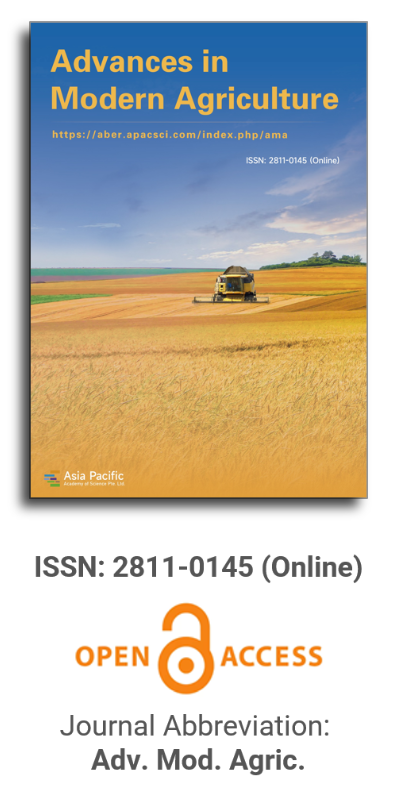


4GQ-1C sugarcane harvester was designed to solve the current problems that large and medium-sized sugarcane harvesters had low adaptability in sloping, small row spacing, and small plots of sugarcane harvesting. In order to verify the adaptability and reliability of 4GQ-1C sugarcane harvester, field tests were carried out and compared with existing models. Results showed that the 4GQ-1C sugarcane harvester has good operation performance with a lower impurity rate and loss rate of sugarcane, stronger harvesting adaptability in small row spacing areas, and is more convenient in collecting sugarcane compared with sugarcane harvesters with power of 132 and 194 kw. Furthermore, 4GQ-1C sugarcane harvester is compact and flexible, with good adaptability and a good harvest effect in sugarcane growing areas with small and medium-sized planting scales, making it worth popularizing and applying to sugarcane harvest.
With the development of agricultural aviation technologies and their application in agricultural production, unmanned aerial vehicles (UAV) have been widely used to control pests and diseases of crops. The high-speed rotation of the rotor in the UAV produces a powerful downwash, affecting the distribution of pesticide droplets on the ground. Understanding the spatial distribution of these droplets on the ground is important to evaluate the application quality of the pesticides and plays an important role in improving the spray system in the UAV and optimizing its operating parameters. Current methods for measuring the droplet deposition distributions use a number of collectors placed regularly on the ground to receive the droplets and measure their sizes; it is difficult for them to effectively obtain the deposition of all droplets due to the downwash of the UAV. This paper presents a new method to resolve this problem by improving the accuracy and spatial continuity of pesticide droplet measurement applied by an unmanned helicopter. The flying parameters of a 3WQF-80-10 unmanned helicopter used to spray pesticides were obtained from the high-precision Beidou navigation system, and the RQT-C-3 fluorescent whitening tracer with a mass fraction of 1.0% was used as the proxy for the pesticides. Two droplet collection methods—one using continuous strip paper and the other using individual water-sensitive paper—were used to measure the droplet deposition distribution. We divided the experimental field into three areas, with Areas 1 and 2 spaced 3 m apart and Areas 2 and 3 spaced 1m apart. A metal bracket 8 m long and 0.5 m away from the ground was placed in each area. Prior to the experiment, a piece of paper tape was fixed to the surface of the bracket, and the water-sensitive paper cards were placed evenly in the area 0.5 m away from the paper tape. There was one piece of paper tape and 15 water-sensitive papers in each area, and a total of six spray tests were performed based on the pro-designed flight parameters. The combinations of flight speed and flight height were: 2 m/s and 3 m, 2 m/s and 6 m, 2 m/s and 9 m, 3 m/s and 3 m, 3 m/s and 6 m, and 4 m/s and 9 m. The paper tape was detected by fluorescence spectroscopy analysis, and the water-sensitive papers were scanned using image processing software to obtain droplet deposition coverage rates. The results showed that the distribution curves of the coverage rate obtained by the paper tape method coupled with the fluorescence spectrum tracer were consistent with those obtained from the images of the water-sensitive paper method, with the R2 being 0.88–0.96. Because not all fine droplets fell on the water-sensitive papers due to the effect of the high-speed rotating rotor, the coverage rate curve measured by the continuous fluorescence method had multiple peaks, and the value of its coverage rate was higher than that measured by the water-sensitive paper method. When the unmanned helicopter flew at a speed of 2 m/s and a height of 3 m, the coverage ratio obtained from the continuous fluorescence method was up 16.92% compared to that sampled from the individual water-sensitive paper method, while when the flight speed was 4 m/s at a height of 9 m, the coverage ratio in the latter was 97.77% higher than in the former. In terms of the impacts of unmanned helicopter operating conditions on coverage rate, when the helicopter flew at 2 m/s and a height of 3 m, the coverage rate of the droplets obtained from the two methods was the highest, being 8.34% for the continuous fluorescence method and 7.14% for the individual paper method. As the flight height and speed increased, the spatial coverage rate of the droplets decreased. In summary, the high-speed rotor of the UAV generates a downwash, making the droplets of pesticides move in different directions and resulting in a large spatial difference in their deposition on the ground. Therefore, the continuous sampling method is more adequate to evaluate the spatial distribution of the droplets. This study has implications for the study of detecting the deposition of pesticides and other agrochemicals applied by UAVs.
In recent years, global patent applications of agricultural UAV technology have continued to grow at a high speed every year. In the global ranking of applicants, the top 10 are all Chinese applicants, with Chinese companies and universities far ahead. The patents applied are mainly for operation management, which is closely connected with the application scenarios of agricultural UAVs. In order to study the development trend of agricultural UAV technology, patent applications after 2009 in the field of agricultural UAV technology were analyzed. Characteristics of patent activities of agricultural UAV technology were revealed from perspectives of overall trend, geographical distribution, main competitors, and technical composition, and the development trend of agricultural UAV technology was revealed from a patent perspective. The results showed that agricultural UAV technology was in a stage of technological development, and prospects were promising. In the next few years, the number of patent applications related to agricultural UAV technology and the number of applicants will still maintain a high growth trend. Overseas deployment and raising awareness of patent protection have become the focus. The study results could provide references for the development of the agricultural UAV industry.
According to the different agricultural production uses, agricultural robots were classified, mainly including agricultural information collection robots, pruning robots, grafting robots, transplanting robots, spraying robots and picking robots. The research status of mainstream agricultural robots at home and abroad were introduced, and their working principles and characteristics were expounded. Finally, the problems existing in the key technologies of existing agricultural robots and their future development directions were put forward.
With the rapid progress of image processing algorithms and computer equipment, the development of machine vision technology in the field of modern agricultural equipment is on the ascendant, and major application results have been obtained in many production links to improve the efficiency and automation of agricultural production. In the face of China, the world’s largest agricultural market, agricultural machine vision equipment undoubtedly has tremendous development potential and market prospects. This paper introduces the research and application of machine vision technology in agricultural equipment in the fields of agricultural product sorting, production automation, pest control, picking machinery, navigation, and positioning, analyzes and summarizes the current problems, and looks forward to the future development trend.

Prof. Zhengjun Qiu
Zhejiang University, China

Cheng Sun
Academician of World Academy of Productivity Science; Executive Chairman, World Confederation of Productivity Science China Chapter, China
Indexing & Archiving
In the realm of modern agriculture, the integration of cutting-edge technologies is revolutionizing the way we approach sustainable farming practices. A recent study published in Advances in Modern Agriculture titled "Classification of cotton water stress using convolutional neural networks and UAV-based RGB imagery" has garnered significant attention for its innovative approach to precision irrigation management. Conducted by researchers from Institute of Data Science and the AgriLife Research and Extension Center of Texas A&M University (authors's information is below). This study introduces a novel method for classifying cotton water stress using unmanned aerial vehicles (UAVs) and convolutional neural networks (CNNs), offering a powerful solution for optimizing water use in agriculture.
Modern agricultural technology is evolving rapidly, with scientists collaborating with leading agricultural enterprises to develop intelligent management practices. These practices utilize advanced systems that provide tailored fertilization and treatment options for large-scale land management.
This journal values human initiative and intelligence, and the employment of AI technologies to write papers that replace the human mind is expressly prohibited. When there is a suspicious submission that uses AI tools to quickly piece together and generate research results, the editorial board of the journal will reject the article, and all journals under the publisher's umbrella will prohibit all authors from submitting their articles.
Readers and authors are asked to exercise caution and strictly adhere to the journal's policy regarding the usage of Artificial Intelligence Generated Content (AIGC) tools.
Asia Pacific Academy of Science Pte. Ltd. (APACSCI) specializes in international journal publishing. APACSCI adopts the open access publishing model and provides an important communication bridge for academic groups whose interest fields include engineering, technology, medicine, computer, mathematics, agriculture and forestry, and environment.


 Open Access
Open Access

.jpg)
.jpg)

.jpg)
